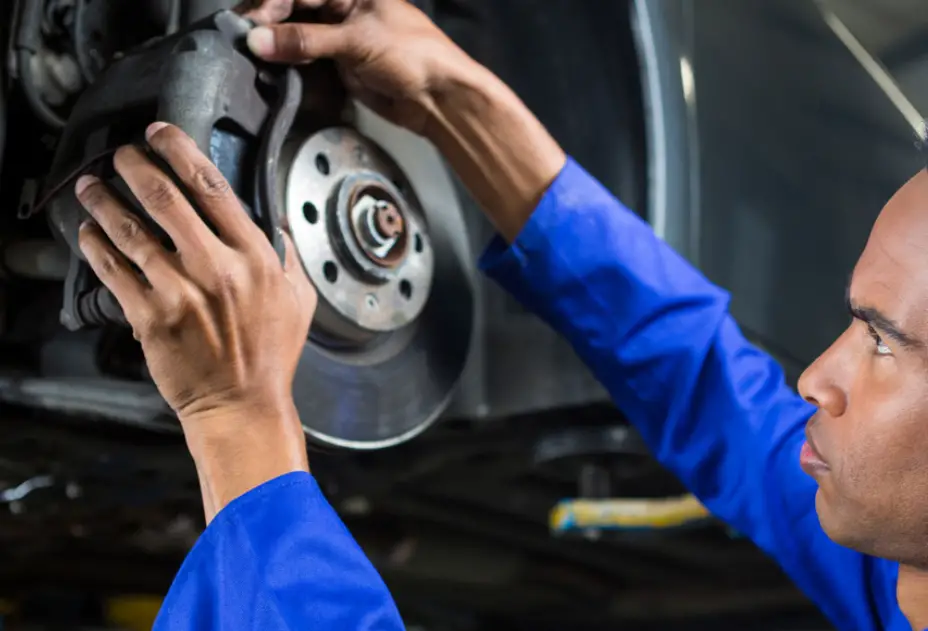
🚗 Brake Maintenance & Repair: Ensure Your Safety 🚗
Hi Car Owner,
In the realm of automotive maintenance, brake maintenance and repair stand as paramount considerations for ensuring the safety and reliability of your vehicle. As a responsible car owner, it is imperative that you prioritize the upkeep of your braking system. Neglecting this crucial component can lead to catastrophic consequences, not only jeopardizing your well-being but also the lives of others sharing the road.
In this comprehensive guide, we will delve into the intricacies of brake maintenance and repair, providing you with the knowledge and understanding necessary to safeguard your vehicle’s braking system. From the fundamentals of brake operation to the intricacies of brake repair, we will equip you with the tools to make informed decisions regarding the maintenance and upkeep of your vehicle’s brakes.
By embarking on this journey of brake maintenance and repair, you will not only enhance the safety and reliability of your vehicle but also reap the benefits of improved fuel efficiency and an extended lifespan for your vehicle’s braking system. Embrace the responsibility of brake maintenance and repair, and experience the peace of mind that comes with knowing your vehicle is in peak condition.
1. Understanding the Importance of Brake Maintenance and Repair
1.1 Preventing Accidents:
A properly functioning brake system is the cornerstone of accident prevention. Timely maintenance and repair ensure that your brakes respond promptly and effectively, enabling you to avoid collisions and safeguard the lives of yourself and your passengers.
1.2 Enhancing Control and Stability:
Well-maintained brakes provide optimal control and stability, allowing you to navigate even the most challenging driving conditions with confidence. Properly functioning brakes enable you to maintain a safe following distance, negotiate curves with ease, and bring your vehicle to a controlled stop.
1.3 Minimizing Wear and Tear:
Regular brake maintenance helps minimize wear and tear on other components of your vehicle, such as tires and suspension. By addressing brake issues promptly, you can prevent costly repairs and extend the lifespan of your vehicle’s braking system.
2. Signs of Brake Problems
2.1 Squealing or Grinding Noises:
Squealing or grinding noises when braking often indicate worn brake pads or rotors. These sounds are a clear sign that brake maintenance or repair is necessary to ensure the safety and reliability of your vehicle.
2.2 Vibrations in the Brake Pedal:
Vibrations felt through the brake pedal during braking can indicate warped rotors or other brake component issues. These vibrations are a warning sign that brake repair is needed to prevent further damage.
2.3 Spongy or Soft Brake Pedal:
A spongy or soft brake pedal that sinks to the floor when pressed is a sign of brake fluid leaks or air in the brake lines. These issues require immediate brake repair to restore the proper functioning of your vehicle’s braking system.
3. Types of Brake Maintenance and Repair Services
3.1 Brake Pad Replacement:
Brake pad replacement is a common brake maintenance service that involves replacing worn brake pads with new ones. Brake pads are essential for creating friction against the rotors, slowing down, and eventually stopping your vehicle.
3.2 Brake Rotor Replacement:
Brake rotor replacement involves replacing worn or damaged brake rotors. Brake rotors are responsible for dissipating heat and providing a smooth braking surface for the brake pads.
3.3 Brake Fluid Flush:
Brake fluid flush involves draining and replacing old, contaminated brake fluid with new brake fluid. Brake fluid is essential for transmitting hydraulic pressure from the brake pedal to the brake calipers.
4. Brake Maintenance and Repair Schedule
4.1 Regular Inspections:
Regular brake inspections are crucial for identifying potential brake problems early on and preventing costly repairs. Inspections should be conducted every 6 months or 12,000 miles, whichever comes first.
4.2 Brake Fluid Changes:
Brake fluid changes should be performed every 2 years or 30,000 miles. Brake fluid absorbs moisture over time, which can lead to corrosion and reduced braking performance.
4.3 Brake Pad and Rotor Replacement:
Brake pad and rotor replacement intervals vary depending on driving conditions and habits. However, brake pads typically last between 30,000 and 60,000 miles, while brake rotors typically last between 60,000 and 90,000 miles.
5. DIY Brake Maintenance vs. Professional Brake Repair
5.1 DIY Brake Maintenance:
DIY brake maintenance can be a cost-effective option for mechanically inclined individuals. However, it requires the necessary tools, knowledge, and experience. If you are unsure about your ability to perform brake maintenance safely and effectively, it is best to seek professional help.
5.2 Professional Brake Repair:
Professional brake repair is recommended for complex brake issues or if you lack the necessary tools, knowledge, or experience. Professional mechanics have the expertise to diagnose and repair brake problems accurately and efficiently, ensuring the safety and reliability of your vehicle.
6. Choosing a Qualified Brake Mechanic
6.1 Reputation and Experience:
When selecting a brake mechanic, consider their reputation and experience. Look for mechanics who have a proven track record of providing high-quality brake repair services.
6.2 ASE Certification:
The ASE (Automotive Service Excellence) certification is a nationally recognized